 Glass replicas of the diamond before (upside down) and after it was re-cut in 1852 | |
 | |
| Weight | 105.602 carats (21.1204 g) |
|---|---|
| Dimensions |
3.6 cm (1.4 in) long 3.2 cm (1.3 in) wide 1.3 cm (0.5 in) deep |
| Colour | D (colourless) |
| Type | IIa |
| Cut | Oval brilliant |
| Facets | 66 |
| Country of origin | India |
| Mine of origin | Kollur Mine |
| Cut by | Levie Benjamin Voorzanger |
| Owner | Queen Elizabeth II in right of the Crown |
| Estimated value | Not insured |
The Koh-i-Noor (UK: /?ko???n??r/; US: /?ko??n??r/; Persian: ???? ????), also spelt Kohinoor and Koh-i-Nur, is one of the largest cut diamonds in the world, weighing 105.6 carats (21.12 g), and part of the British Crown Jewels.
The diamond was originally owned by the Kakatiya dynasty. Probably mined in Golconda, India, there is no record of its original weight, but the earliest well-attested weight is 186 old carats (191 metric carats or 38.2 g). Koh-i-Noor is Persian for "Mountain of Light"; it has been known by this name since the 18th century. It changed hands between various factions in modern-day India, Pakistan, Iran, and Afghanistan, until being ceded to Queen Victoria after the British conquest of the Punjab in 1849.
Originally, the stone was of a similar cut to other Mughal era diamonds which are now in the Iranian Crown Jewels. In 1851, it went on display at the Great Exhibition in London, but the lacklustre cut failed to impress viewers. Prince Albert, husband of Queen Victoria, ordered it to be re-cut as an oval brilliant by Coster Diamonds. By modern standards, the culet is unusually broad, giving the impression of a black hole when the stone is viewed head-on; it is nevertheless regarded by gemmologists as "full of life".
Because its history involves a great deal of fighting between men, the Koh-i-Noor acquired a reputation within the British royal family for bringing bad luck to any man who wears it. Since arriving in the UK, it has only been worn by female members of the family. Victoria wore the stone in a brooch and a circlet. After she died in 1901, it was set in the Crown of Queen Alexandra, wife of Edward VII. It was transferred to the Crown of Queen Mary in 1911, and finally to the Crown of Queen Elizabeth The Queen Mother in 1937.
Today, the diamond is on public display in the Jewel House at the Tower of London, where it is seen by millions of visitors each year. The governments of India, Pakistan, Iran, and Afghanistan have all claimed rightful ownership of the Koh-i-Noor and demanded its return ever since India gained independence from the UK in 1947. The British government insists the gem was obtained legally under the terms of the Last Treaty of Lahore and has rejected the claims.
Contents
History
Origin
The diamond is widely believed to have come from Kollur Mine, a series of 4-metre (13 ft) deep gravel-clay pits on the banks of Krishna River in the Golconda (present-day Andhra Pradesh), India. It is impossible to know exactly when or where it was found, and many unverifiable theories exist as to its original owner.
Early history
Babur, the Turco-Mongol founder of the Mughal Empire, wrote about a "famous" diamond that weighed just over 187 old carats – approximately the size of the 186-carat Koh-i-Noor. Some historians think Babur's diamond is the earliest reliable reference to the Koh-i-Noor. According to his diary, it was acquired by Alauddin Khalji, second ruler of the Khalji dynasty of the Delhi Sultanate, when he invaded the kingdoms of southern India at the beginning of the 14th century. It later passed to succeeding dynasties of the Sultanate, and Babur received the diamond in 1526 as a tribute for his conquest of Delhi and Agra at the Battle of Panipat.
Shah Jahan, the fifth Mughal emperor, had the stone placed into his ornate Peacock Throne. In 1658, his son and successor, Aurangzeb, confined the ailing emperor to Agra Fort. While in the possession of Aurangzeb, it was allegedly cut by Hortenso Borgia, a Venetian lapidary, reducing the weight of the large stone to 186 carats (37.2 g). For this carelessness, Borgia was reprimanded and fined 10,000 rupees. According to recent research the story of Borgia cutting the diamond is not correct, and most probably mixed up with the Orlov, part of Catherine the Great's imperial Russian sceptre in the Kremlin.
Following the 1739 invasion of Delhi by Nader Shah, the Afsharid Shah of Persia, the treasury of the Mughal Empire was looted by his army in an organised and thorough acquisition of the Mughal nobility's wealth. Along with millions of rupees and an assortment of historic jewels, the Shah also carried away the Koh-i-Noor. He exclaimed Koh-i-Noor!, Persian for "Mountain of Light", when he obtained the famous stone. One of his consorts said, "If a strong man were to throw four stones – one north, one south, one east, one west, and a fifth stone up into the air – and if the space between them were to be filled with gold, all would not equal the value of the Koh-i-Noor".
After Nader Shah was killed and his empire collapsed in 1747, the Koh-i-Noor fell to his grandson, who in 1751 gave it to Ahmad Shah Durrani, founder of the Afghan Empire, in return for his support. One of Ahmed's descendants, Shuja Shah Durrani, wore a bracelet containing the Koh-i-Noor on the occasion of Mountstuart Elphinstone's visit to Peshawar in 1808. A year later, Shujah formed an alliance with the United Kingdom to help defend against a possible invasion of Afghanistan by Russia. He was quickly overthrown, but fled with the diamond to Lahore, where Ranjit Singh, founder of the Sikh Empire, in return for his hospitality, insisted upon the gem being given to him, and he took possession of it in 1813.
Acquisition by Queen Victoria
Its new owner, Ranjit Singh, willed the diamond to the East India Company administered Hindu Jagannath Temple in Puri, in modern-day Odisha, India. However, after his death in 1839, his will was not executed. On 29 March 1849, following the conclusion of the Second Anglo-Sikh War, the Kingdom of Punjab was formally annexed to Company rule, and the Last Treaty of Lahore was signed, officially ceding the Koh-i-Noor to Queen Victoria and the Maharaja's other assets to the company. Article III of the treaty read: "The gem called the Koh-i-Noor, which was taken from Shah Sooja-ool-moolk by Maharajah Ranjeet Singh, shall be surrendered by the Maharajah of Lahore to the Queen of England (sic)".
The Governor-General in charge of the ratification of this treaty was the Marquess of Dalhousie. The manner of his aiding in the transfer of the diamond was criticized even by some of his contemporaries in Britain. Although some thought it should have been presented as a gift to Queen Victoria by the East India Company, it is clear that Dalhousie believed the stone was a spoil of war, and treated it accordingly, ensuring that it was officially surrendered to her by Duleep Singh, the youngest son of Ranjit Singh. The presentation of the Koh-i-Noor by the East India Company to the queen was the latest in a long history of transfers of the diamond as a coveted spoil of war. Duleep Singh had been placed in the guardianship of Dr John Login, a surgeon in the British Army serving in the Presidency of Bengal. Duleep Singh would move to England in 1854.
Journey to the United Kingdom
Fig I. Shaded area is the base.
Fig II. A: flaw; B and C: notches cut to hold stone in a setting; D: flaw created by fracture at E; F: fracture created by a blow; G: unpolished cleavage plane; H: basal cleavage plane.
Fig III. Opposite side, showing facets and peak of the "Mountain of Light"
In due course, the Governor-General received the Koh-i-Noor from Dr Login, who had been appointed Governor of the Citadel, on 6 April 1848 under a receipt dated 7 December 1849, in the presence of members of the Board of Administration for the affairs of the Punjab: Sir Henry Lawrence (President), C. G. Mansel, John Lawrence and Sir Henry Elliot (Secretary to the Government of India).
Legend in the Lawrence family has it that before the voyage, John Lawrence left the jewel in his waistcoat pocket when it was sent to be laundered, and was most grateful when it was returned promptly by the valet who found it.
On 1 February 1850, the jewel was sealed in a small iron safe inside a red dispatch box, both sealed with red tape and a wax seal and kept in a chest at Bombay Treasury awaiting a steamer ship from China. It was then sent to England for presentation to Queen Victoria in the care of Captain J. Ramsay and Brevet Lt. Col F. Mackeson under tight security arrangements, one of which was the placement of the dispatch box in a larger iron safe. They departed from Bombay on 6 April on board HMS Medea, captained by Captain Lockyer.
The ship had a difficult voyage: an outbreak of cholera on board when the ship was in Mauritius had the locals demanding its departure, and they asked their governor to open fire on the vessel and destroy it if there was no response. Shortly afterwards, the vessel was hit by a severe gale that blew for some 12 hours.
On arrival in Britain on 29 June, the passengers and mail were unloaded in Plymouth, but the Koh-i-Noor stayed on board until the ship reached Spithead, near Portsmouth, on 1 July. The next morning, Ramsay and Mackeson, in the company of Mr Onslow, the private secretary to the Chairman of the Court of Directors of the British East India Company, proceeded by train to East India House in the City of London and passed the diamond into the care of the chairman and deputy chairman of the East India Company.
The Koh-i-Noor was formally presented to Queen Victoria on 3 July 1850 at Buckingham Palace by the deputy chairman of the East India Company. The date had been chosen to coincide with the Company's 250th anniversary.
The Great Exhibition
Members of the public were given a chance to see the Koh-i-Noor when The Great Exhibition was staged at Hyde Park, London, in 1851. It represented the might of the British Empire and took pride of place in the eastern part of the central gallery.
Its mysterious past and advertised value of £1–2 million drew large crowds. At first, the stone was put inside a gilded birdcage, but after complaints about its dull appearance, the Koh-i-Noor was moved to a case with black velvet and gas lamps in the hope that it would sparkle better.[39] Despite this, the flawed and asymmetrical diamond still failed to please viewers.[3]
1852 re-cutting
Originally, the diamond had 169 facets and was 4.1 centimetres (1.6 in) long, 3.26 centimetres (1.28 in) wide, and 1.62 centimetres (0.64 in) deep. It was high-domed, with a flat base and both triangular and rectangular facets, similar in overall appearance to other Mughal era diamonds which are now in the Iranian Crown Jewels.[40]
Disappointment in the appearance of the stone was not uncommon. After consulting various mineralogists, including Sir David Brewster, it was decided by Prince Albert, the husband of Queen Victoria, with the consent of the government, to polish the Koh-i-Noor. One of the largest and most famous Dutch diamond merchants, Mozes Coster, was employed for the task. He sent to London one of his most experienced artisans, Levie Benjamin Voorzanger, and his assistants.[23]

Request Movie Now
Watch movie Kohinoor online on Amazon
Watch movie Kohinoor online
Watch The Movie On PrimeLovesongs Yesterday Today and Tomorrow Full HD Movie Download

Yaadein Full HD Movie Download

Aafat Full HD Movie Download

Meharbani (1982) Full HD Movie Download
.jpg)
Wake Up Sid Full HD Movie Download

Benaam (1974) Full HD Movie Download
.jpg)
Munimji (1955) Full HD Movie Download
.jpg)
Apne Dam Par Full HD Movie Download
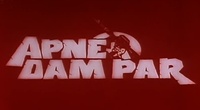
Sainik: The Love Story of a Soldier Full HD Movie Download

Daku Veera Full HD Movie Download
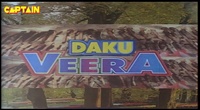
Zulm ka baadshah Full HD Movie Download
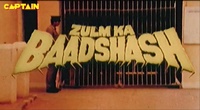
Devi Mahathmyam Full HD Movie Download
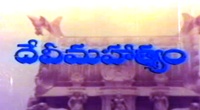
Main Hoon Rakhwala Full HD Movie Download

Bandya Ani Baby Full HD Movie Download

Badle Ki Jwala Full HD Movie Download
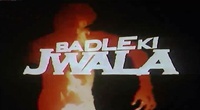
Sachhai Ki Taaqat (2005) Full HD Movie Download
.jpg)
Manikya Chempazhukka Full HD Movie Download
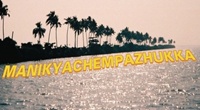
Manavadosthunnadu Full HD Movie Download
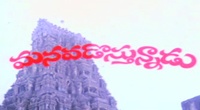
The Mountain Of The Cannibal God (Telugu) Full HD Movie Download
.jpg)
Devadasu Malli Puttadu Full HD Movie Download

Ek Tha Tiger Full HD Movie Download

Download latest Movie from bollywood
- 1> baaghi 3
- 2> THE SKY IS PINK MOVIE FULL STORY AND REVIEW
- 3> Luka Chuppi
- 4> TO ALL THE BOYS I’VE LOVED BEFORE
- 5> Kabir Singh
- 6> Street Dancer 3D
- 7> Simmba
- 8> Gone Girl
- 9> The Girl Who Lived
- 10> Ludo
- 11> DILWALE DULHANIA LE JAYENGE
- 12> GUILTY
- 13> The Godfather
- 14> Adventures of Rusty
- 15> Sooryavanshi
- 16> Satyameva Jayate 2
- 17> Thappad
- 18> Bhool Bhulaiyaa 2
- 19> KGFChapter 2
- 20> Mardaani 2
- 21> Pinjar
- 22> Shivaji maharaj
- 23> Ek Villian 2
- 24> Hungama 2
- 25> Divergent
- 26> Mumbai Saga
- 27> The Internship
- 28> HIT (telugu)
- 29> Panga
- 30> The perfect date
- 31> 16 December
- 32> Gopala Gopala (Telugu)
- 33> Brahmastra
- 34> Gangubai Kathiawadi
- 35> Manmadhudu
- 36> Nenu local
- 37> Mahanati
- 38> Shatamanam bavathi
- 39> Lagaan
- 40> After
- 41> MOM
- 42> Shamshera
- 43> Raguvaran BTech
- 44> Khakee
- 45> The villain
- 46> OM
- 47> Mr. perfect
- 48> Bueatifull mind
- 49> Hichki
- 50> Gabbar Singh
- 51> Jogi
- 52> Before Sunrise
- 53> Before Sunset
- 54> Before Midnight
- 55> The Big Bull
- 56> Top Gun: Maverick
- 57> The Purge
- 58> The Sky is Pink
- 59> Laxmmi Bomb
- 60> Sadak 2
- 61> Sufna
- 62> Prithviraj
- 63> PK
- 64> Coolie No 1(2020)
- 65> Black Widow
- 66> Dear Zindagi
- 67> Dil Bechara
- 68> PHIR HERA PHERI
- 69> WAR
- 70> Dostana
- 71> RRR: Roudram Ranam Rudhiram
- 72> Maidan
- 73> Dabbang 3
- 74> Chhalaang
- 75> life as we know it
- 76> SherShaah
- 77> Sandeep Aur Pinky Faraar
- 78> Event Horizon
- 79> 83
- 80> Radhe: Your Most Wanted Bhai
- 81> Gunjan Saxena: The Kargil Girl
- 82> Mr India
- 83> Vivah
- 84> Anokha Bandhan
- 85> Ghost
- 86> Bhoot: Part One - The Haunted Ship
- 87> Haseen Dilruba
- 88> Laal Singh Chaddha
- 89> Qismat
- 90> Rajput
- 91> Drive
- 92> Dil Chahta Hai
- 93> Dil Ki Baazi
- 94> Dil Ka Rishta
- 95> Teesri Manzil
- 96> Dil
- 97> Love Aaj Kal
- 98> Khaali Peeli
- 99> Bunty Aur Babli 2
- 100> Atrangi Re
- 101> Gulabo Sitabo
- 102> Jodi
- 103> Suraj Pe Mangal Bhari
- 104> Deewana
- 105> Attack
- 106> Sardar Udham Singh
- 107> Toofan
- 108> THE LOVEBIRDS
- 109> Jersey
- 110> Ginny Weds Sunny
- 111> Thalaivi
- 112> Shiddat
- 113> Angels vs Zombies
- 114> Koi Mil Gya
- 115> Thank God
- 116> Bhuj: The Pride of India
- 117> Hum Aapke Hain Kaun
- 118> The Platform
- 119> Bird Box
- 120> Roohi Afzana
- 121> Torbaaz
- 122> Nikamma
- 123> World War Z
- 124> Extraction
- 125> Train to Busan
- 126> Life of Pi
- 127> SHAADI MEIN JROOR AANA
- 128> Himmat Aur Mehnat
- 129> To All The Boys: P.S. I Still Love You
- 130> Mimi
- 131> Good Newwz
- 132> Shubh Mangal Zyada Saavdhan
- 133> Raabta
- 134> Harry Potter and the Philosopher's Stone
- 135> Harry Potter and the Chamber of Secrets
- 136> Chhapaak
- 137> War of the Worlds
- 138> Harry Potter and the Prisoner of Azkaban
- 139> Harry Potter and the Goblet of Fire
- 140> MURDER MYSTERY
- 141> Shakuntala Devi
- 142> Bachchan Pandey
- 143> Jayeshbhai Jordar
- 144> Sheer Qorma
- 145> Saina
- 146> 'O' Pushpa I hate tears
- 147> Kedarnath
- 148> MS Dhoni The Untold Story
- 149> Chhichhore
- 150> Badhaai Ho
- 151> Unstoppable
- 152> Oz the Great And Powerful
- 153> The Girl on the Train
- 154> Haathi Mere Saathi 2020
- 155> The Conjuring: The Devil Made Me Do It
- 156> Gandhi Se Pehle Gandhi
- 157> The Song of Scorpions
- 158> Srimanthudu
- 159> Hello Guru Prema Kosame
- 160> Beauty and The Beast
- 161> Black Panther
- 162> Charlie and the Chocolate Factory
- 163> Bole Chudiyan
- 164> Fidaa
- 165> Duvvada Jagannadham
- 166> Bruce Lee: The Fighter
- 167> Hyper
- 168> Yaara
- 169> Red (2020)
- 170> Shivam
- 171> That Is Mahalakshmi
- 172> Nishabdham
- 173> Aashram 2020 web series
- 174> Laxmii
- 175> Mismatched
- 176> STUDENT OF THE YEAR 2
- 177> NAIL POLISH
- 178> Ramprasad Ki Tehrvi
- 179> KAAGAZ
- 180> 12 o Clock
- 181> The Power
- 182> bolo hau
- 183> Tribhanga
- 184> JAMUN
- 185> Madam Chief Minister
- 186> Maasaab
- 187> Aadhaar
- 188> Tanhaji
- 189> Bhaagi 3
- 190> Bhootnath
- 191> MALANG
- 192> Jai Mummy Di
- 193> Haathi Mere Saathi 2021
- 194> Shakeela
- 195> Unpaused
- 196> Annayya
- 197> Vamsoddharakudu
- 198> Mrugaraju
- 199> Narasimha Naidu
- 200> Sankranti
- 201> Manasu Maata Vinadhu
- 202> Anjaane
- 203> Apaharan
- 204> Bachke Rehna Re Baba
- 205> Bewafaa
- 206> Roohi
- 207> Radhe
- 208> Zindagi Khoobsoorat Hai
- 209> Yeh Mohabbat Hai
- 210> Yeh Kya Ho Raha Hai?
- 211> The Tomorrow War
- 212> DehradunDiary
- 213> Meri Shaadi Karaoo
- 214> Matruu Ki Bijlee Ka Mandola
- 215> No One Killed Jesica
- 216> Aag Ka Goola
- 217> Eight Million Dollars
- 218> Three Hundred
- 219> Cats and Dog
- 220> Decoy
- 221> Gold Rush
- 222> You Have Got Mail
- 223> Final Destination three
- 224> Tofan
- 225> Jungle
Request for Download movie Kohinoor
- Bollywood movies
- Latest Bollywood movies
- Download all bengali movies
- Download all bhojpuri movies
- Download all english movies
- Download all gujarati movies
- Download all hindi movies
- Download all kannada movies
- Download all malayalam movies
- Download all marathi movies
- Download all oriya movies
- Download all punjabi movies
- Download all tamil movies
- Download all telugu movies
- Bollywood action movies
- Bollywood adventure movies
- Bollywood animation movies
- Bollywood classical movies
- Bollywood comedy movies
- Bollywood crime movies
- Bollywood devotional movies
- Bollywood documentary movies
- Bollywood drama movies
- Bollywood family movies
- Bollywood fantasy movies
- Bollywood historical movies
- Bollywood history movies
- Bollywood horror movies
- Bollywood musical movies
- Bollywood mystery movies
- Bollywood mythological movies
- Bollywood patriotic movies
- Bollywood romance movies
- Bollywood romantic movies
- Bollywood sci-fi movies
- Bollywood social movies
- Bollywood spiritual movies
- Bollywood sports movies
- Bollywood suspense movies
- Bollywood thriller movies
- Bollywood war movies
- Hot actress list
- Hot gujarati actress list
- Hot tamil actress list
- Hot bhojpuri actress list
- Hot assam actress list
- Hot bihari actress list
- Hot jammu and kashmir actress list
- Hot gujarati actress list
- Hot haryana actress list
- Hot konkani actress list
- Hot marathi actress list
- Hot odia actress list
- Hot punjabi actress list
- Hot rajasthani actress list
- Hot kannada actress list
- Hot malayalam actress list
- Hot telugu actress list
- Hot tulu actress list
- Hot Actress list from Indian city
- Hot actress list from ahmedabad
- Hot actress list from alappuzha
- Hot actress list from bangalore
- Hot actress list from bangalore
- Hot actress list from bhopal
- Hot actress list from chandigarh
- Hot actress list from chennai
- Hot actress list from guwahati
- Hot actress list from hyderabad, india
- Hot actress list from indore
- Hot actress list from jaipur
- Hot actress list from kannur
- Hot actress list from kochi
- Hot actress list from kolkata
- Hot actress list from kollam
- Hot actress list from kottayam
- Hot actress list from kozhikode
- Hot actress list from lucknow
- Hot actress list from madurai
- Hot actress list from mangalore
- Hot actress list from mumbai
- Hot actress list from mysore
- Hot actress list from new delhi
- Hot actress list from patna
- Hot actress list from pune
- Hot actress list from thiruvananthapuram
- Hot actress list from thrissur
- Hot actress list from tiruchirappalli
- Hot actress list from vijayawada
- Hot actress list from visakhapatnam
- All Bollywood Movies
- Bollywood Celeb
- >Art Director
- >Audiography
- >Background Music
- >Banner
- >Choreographer
- >Cinematographer
- >Costume Designer
- >Dialogue Writer
- >Director
- >Distributor
- >Editor
- >Executive Producer
- >Hair Stylist
- >Lyricist
- >Music Director
- >Photographer
- >Playback Singers
- >Presenter
- >Producer
- >Production Company
- >Production Designer
- >Screenplay
- >Singer
- >Sound
- >Actor
- >Story Writer
- >Studio
- >Video Director
- >Miscellaneous
- >Publicity (pro)
- >Web Creator
- >Production Labs
- >Publicity Design
- >Publicity Stills
- >Writer
- >Miscellaneous Artists
- >Visual Effects
- >Reporter
- >Music Company
- >Shooting Studios
- >Picturised On
- >Line Producer
- >Co Producer
- >Asst Director
- >Casting Director
- >Cinematography
- >Choreography
- >Dialouge
- >Editing
- >Lyrics
- >Music
- >Story
- >Playback Singer Female
- >Playback Singer Male
- >Actor In A Comic Role (male/female)
- >Child Artiste
- >Ensemble Cast
- >Actor Popular Choice (male)
- >Actor Popular Choice (female)
- >Sa Re Ga Ma Pa Song Of The Year
- >Actor In Supporting Role
- >Actress In Supporting Role
- >Actor In Leading Role
- >Art Direction
- >Actress In Leading Role
- >Sound Recording
- >Costume Design
- >Special Effects
- >Action
- >Actor In A Negative Role
- >Lifetime Achievement Award
- >Cinematic Exellence (director)
- >Cinematic Exellence (male)
- >Cinematic Exellence (female)
- >International Male Icon
- >International Female Icon
- >Actor In A Supporting Role (male)
- >Actor In A Supporting Role (female)
- >Actor In A Comic Role
- >Playback Singer (male)
- >Playback Singer (female)
- >Most Promising Debut (female)
- >Most Promising Debut (male)
- >Most Promising Director
- >Sound Design
- >Lifetime Jodi
- >Marketed Film
- >Jury Award For Best Actor
- >Jury Award For Best Actress
- >Jury Award For Best Film
- >Jury Award For Best Director
- >Playback Singer(male)
- >Lifetime Acheivement Award (male)
- >Excellence Award
- >Jodi Award
- >Performer Of The Year
- >Presented By